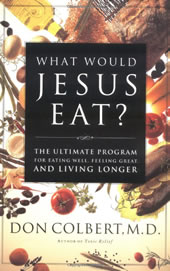Faith-based dieting is a burgeoning movement that intertwines spirituality with nutritional choices, often prompting practitioners to ponder the dietary habits of revered figures from religious texts. In the realm of Christianity, one figure stands out: Jesus Christ. The concept of “What Would Jesus Eat?” (WWJE) encapsulates an exploration into the foods that were available in biblical times and how these can inform contemporary eating habits.
To embark on this culinary exploration, it is essential to understand the historical and geographical context of Jesus’s time. Agrarian societies, such as ancient Judea, relied heavily on locally sourced foods. This diet typically consisted of whole grains, legumes, vegetables, fruits, and fish, with limited meat consumption primarily during festivals or significant gatherings. The Mediterranean climate fostered the growth of olives, figs, and grapes, which were staples in the diets of those living in that era.
When considering the question of WWJE, it prompts a thoughtful reflection on the principles of moderation and gratitude. The act of eating was not merely a means of sustenance but also an opportunity for community bonding and celebrating abundance. Thus, modern readers may find inspiration in recreating such communal experiences through shared meals that emphasize wholesome, unprocessed ingredients.
Readers exploring this concept can expect a multi-faceted approach to dieting. First and foremost, recipes inspired by biblical culinary traditions offer a practical way to incorporate these elements into everyday life. Dishes featuring lentils, whole grains, and seasonal vegetables can serve as modern adaptations of ancient meals, connecting one’s faith with their plate.
Additionally, discussions surrounding ethical eating resonate deeply within this framework. The biblical advocacy for stewardship of the earth encourages a focus on sustainable practices, such as sourcing ingredients from local farmers or choosing organic produce. This commitment not only honors the natural world but also aligns with contemporary movements towards environmental sustainability.
Moreover, spiritual reflections accompany the dietary guidelines. Meditative practices entwined with meal preparation can foster mindfulness and enhance the overall dining experience. The importance of prayer before meals serves as a reminder to appreciate the nourishing act of eating, thereby cultivating a sense of gratitude that extends beyond the dinner table.
In summary, the exploration of “What Would Jesus Eat?” invites a rich and layered understanding of diet through a faith-based lens. Readers can anticipate engaging recipes, ethical discussions, and spiritual insights that collectively promote a holistic approach to eating. This movement is not merely about adhering to specific foods; it transcends into an entire lifestyle that harmonizes diet with faith, encouraging individuals to forge a deeper connection with what they consume.
